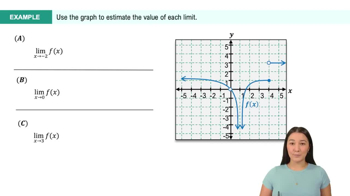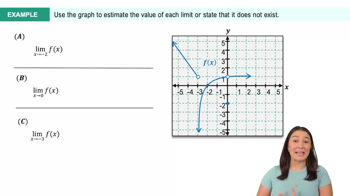Table of contents
- 0. Functions7h 52m
- Introduction to Functions16m
- Piecewise Functions10m
- Properties of Functions9m
- Common Functions1h 8m
- Transformations5m
- Combining Functions27m
- Exponent rules32m
- Exponential Functions28m
- Logarithmic Functions24m
- Properties of Logarithms34m
- Exponential & Logarithmic Equations35m
- Introduction to Trigonometric Functions38m
- Graphs of Trigonometric Functions44m
- Trigonometric Identities47m
- Inverse Trigonometric Functions48m
- 1. Limits and Continuity2h 2m
- 2. Intro to Derivatives1h 33m
- 3. Techniques of Differentiation3h 18m
- 4. Applications of Derivatives2h 38m
- 5. Graphical Applications of Derivatives6h 2m
- 6. Derivatives of Inverse, Exponential, & Logarithmic Functions2h 37m
- 7. Antiderivatives & Indefinite Integrals1h 26m
- 8. Definite Integrals3h 25m
1. Limits and Continuity
Introduction to Limits
Problem 4.3.111a
Textbook Question
Population models The population of a species is given by the function P(t) = Kt²/(t² + b) , where t ≥ 0 is measured in years and K and b are positive real numbers.
a. With K = 300 and b = 30, what is lim_t→∞ P(t), the carrying capacity of the population?
 Verified step by step guidance
Verified step by step guidance1
Identify the function for the population, which is given as P(t) = Kt²/(t² + b).
Substitute the values of K and b into the function: P(t) = 300t²/(t² + 30).
To find the limit as t approaches infinity, analyze the behavior of the function as t becomes very large.
Divide the numerator and the denominator by t² to simplify the expression: P(t) = 300/(1 + 30/t²).
Evaluate the limit as t approaches infinity, noting that 30/t² approaches 0, leading to the final simplified expression.
Recommended similar problem, with video answer:
 Verified Solution
Verified SolutionThis video solution was recommended by our tutors as helpful for the problem above
Video duration:
2mPlay a video:
Was this helpful?

 6:47m
6:47mWatch next
Master Finding Limits Numerically and Graphically with a bite sized video explanation from Callie
Start learning





